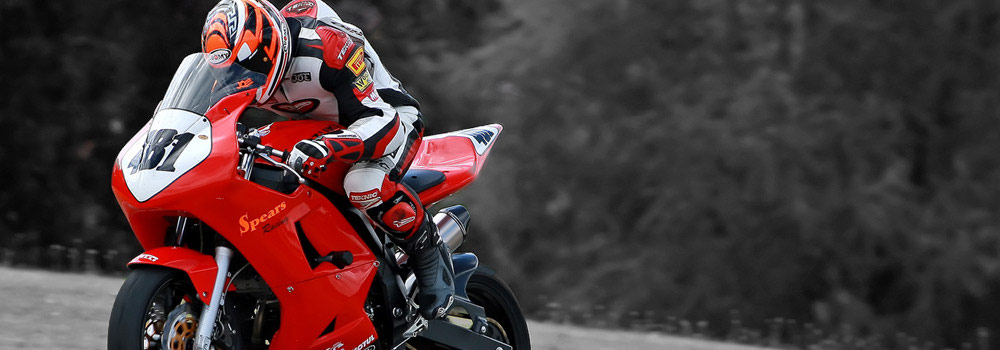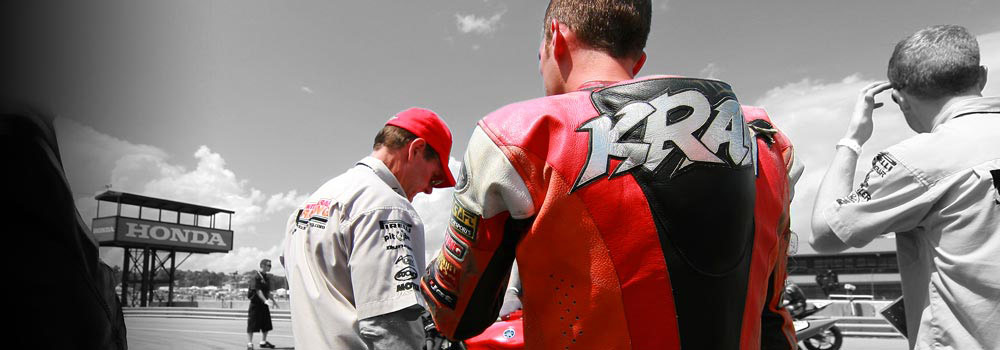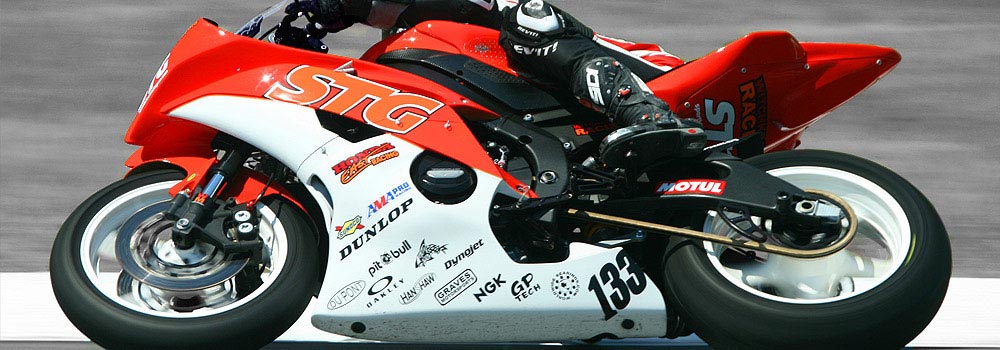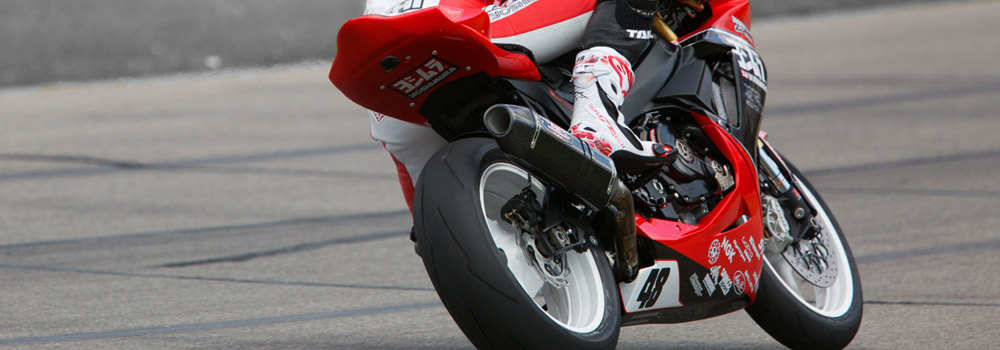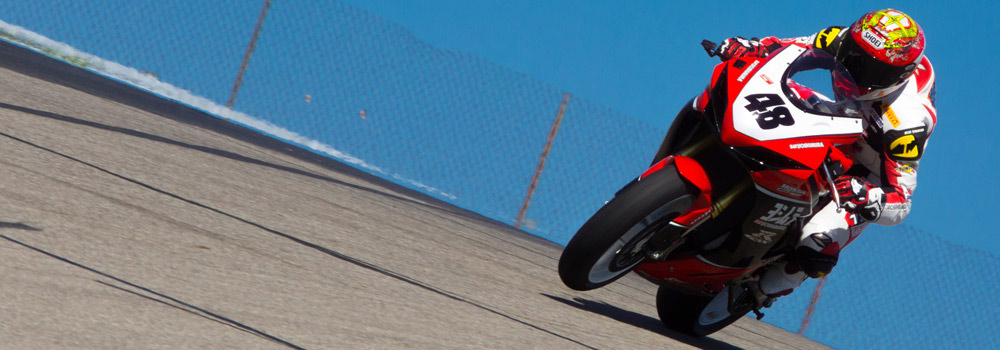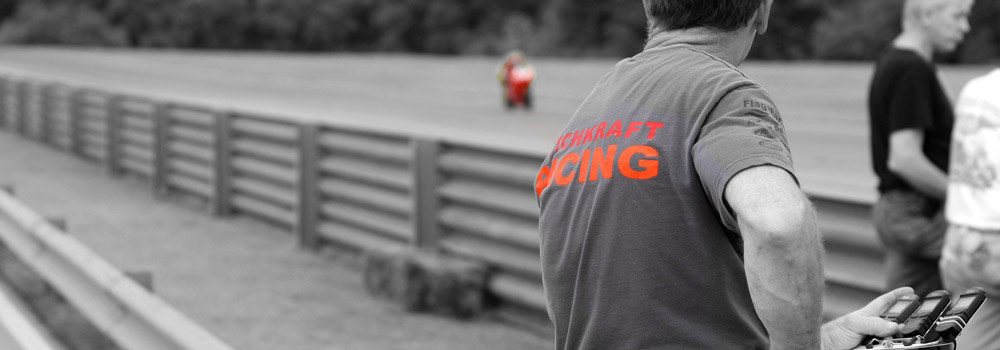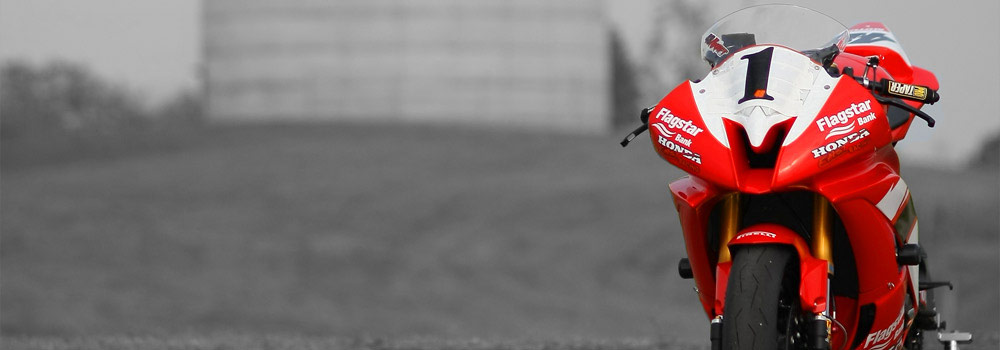-
What Makes Sharkskinz So Good?
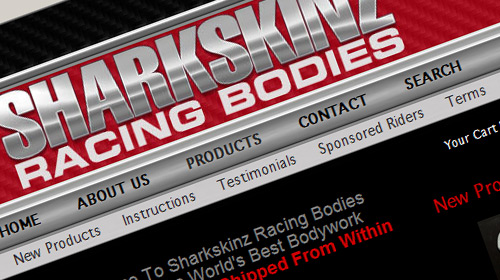
Most people don't know what goes into making motorcycle racing bodywork – especially what goes into making Sharkskinz the best bodywork today. Sure, it costs a little more compared to some other brands out there, but there are a number of reasons why. Here, Rick Lee of Sharkskinz answers the questions I asked him, detailing exactly what goes into making the Sharkskinz product – and what makes it as good as it is.
I'll give you as much info. here as I can to help you get a better idea of what goes into our product.
All of the parts we make here use the same process, so we'll start with materials. We use fiberglass in our production pieces; pretty much like everyone else selling race bodywork. The two main types of fiberglass used are mat (chopped strand) and woven. Mat is generally the cheaper stuff on the market, and most of the stuff produced in Asia is built using chopped strand glass which is as it sounds – is chopped strands glued together. It's highly unsuitable for any lightweight application as it's got very little strength and will tear apart easily. It's a whole lot cheaper than anything else we use, as this type of cloth costs about one tenth the price of ours.
The woven type of fiberglass cloth is what we use exclusively. The more expensive bodywork is generally made with woven fiberglass. The strands are continuous which gives it a lot more strength and flexibility. We test different brands of woven fiberglass on a regular basis but have stuck with the same brand of glass for the last 12 years, since we have been unable to find anything else that performs as well. It's one of the more expensive brands out there but all of the newer fiberglass we've tested, coming out of Asia mainly, is not nearly as lightweight or durable. It's very hard and sometimes impossible to tell the difference between the good quality and the poor quality fiberglass just by looking at it, but crashes and overall durability will be affected a good deal. Some of the parts I've personally seen that are built overseas with epoxy resin and woven cloth can literally be torn in half by hand. When we need to throw away a piece of our bodywork for some reason, usually a damaged piece, we've got to cut it up with an airsaw to get it in a trash can. Just about every sample piece of bodywork we get from someone looking to manufacture our parts we can tear up by hand.
The resin is the other main material used to make fiberglass bodywork. This is what wets the cloth out and actually gives it rigidity. The two main types of resin are polyester and epoxy. Polyester is a low quality resin that's cheap and easy to work with. Usually this resin goes hand in hand with parts that are made with the chopped strand fiberglass. Polyester has lower flexibility than epoxy so is less shatter resistant. This leads to stress cracks and poor fitment issues that you don't find in our bodywork.
We use an epoxy resin that was developed for use in lightweight aircraft. Just like with the woven fiberglass cloth, there are varying degrees of quality between the epoxies. Ours is on the more expensive side and is the same brand we've used for the last twenty years. We also continually test new resins, but so far haven't found one that works for this application as well. A few of the other bodywork companies use epoxies, but I'd be willing to bet its probably a lower quality product and is not going to perform as well as ours. I believe most of it is imported from Asia and I've built test pieces using the available resin and fiberglass over there and they were nowhere near as durable as our parts. They also have a tendency to warp, causing the pieces to fit the bike and each other incorrectly. Our resin has almost no shrinkage which prevents problems with warping. The effect of this is two-fold. Our molds are built with the same materials which will maintain the original shape of the OEM parts and the parts themselves won't deviate from the shape of the mold. If the molds and the parts are built with resin that does have shrinking and warping problems then they will actually deviate twice from the original shape resulting in ill-fitting pieces.
Once the parts are built and cured they are released fom the mold and the edges are trimmed. We make extensive use of trim masks to ensure that the accuracy of the edges don't vary from one part to the next. This is another area the sets our bodywork apart from lesser products. Trim lines are critical around windscreen edges, the joints where parts fit together and anywhere a part attaches to an existing piece on a bike. We spend a lot of time making sure these edges are cut correctly and every piece of bodywork that's made here goes through the hands of either Jason, Dave or myself for inspecting before moving to the finishing process.
Our finish is another point that sets us apart. There is a special, detailed process here. And after the trimming of the part is done they are hand-sanded and any defects are repaired and the surface is smoothed out. We then prep the part for paint with another special process. Some of the other manufacturers use a method of spraying their parts with a finishing primer; but most of the time the surface will have defects such as pinholes or mismatched body seams which the painter will have to fix before painting. We typically spend 1 to 2 hours just on the sanding portion alone for a set of bodywork to ensure a surface free of defects, which cuts that work out for the customer. Lesser quality bodywork can take even longer to prep for paint due to poor build quality, poor molds and a poor job with the primer (if the parts have it), requiring the customer or their painter to do that work themselves. Most of the cheaper bodywork also uses gelcoat as a base instead of primer. Gelcoat is used due to its ability to be applied in a thick coating which will help hide defects in the construction, such as air bubbles. This can cause problems once the parts are used and stressed, or are heated and the defects underneath the surface will show up as dents or cracks. Gelcoat also spiderweb cracks over time, which will leave the surface of the bodywork with small stress fractures in the finish. We could buy cheaper fiberglass and spend anywhere from half to one fifth of the cost on it but the quality will suffer – less toughness, crash resistance and higher weight.The same is true of our resin and our primers. A cheaper primer might be gray just like the stuff we use, but that might come at the cost of ease of sanding, durability, paint compatibility, etc.
The construction of a part in regards to how the materials are actually placed in the mold to form the piece differs greatly from manufacturer to manufacturer. Our twenty years have given us a lot of experience in knowing where to reinforce a part and make them tough. All of the critical areas are reinforced with amounts of material we know works. Mounting points have a specific amount of material in them to make sure they hold the piece on the bike. Other spots that, we know will be subject to impact or stress just from useage are done in the same way. This is something that will go unnoticed until the parts are ripped off the bike in a crash or a mounting point tears away because it wasn't reinforced, or just the pressure of the bolt causes it to fail. The use of stictly woven fiberglass makes a huge difference with the strength in critical areas.
Our tooling (molds) are all made from the same materials as our parts. This ensures accuracy from the actual OEM parts we are using to base our designs off of. Molds made of lesser and cheaper materials are going to suffer from the same problems the parts themselves have, mainly warping and shrinking which can continue over time to actually make the molds quite a bit out of line from the original intended design. Our molds don't suffer from degradation in shape over time, ensuring that the five hundredth part is precisely the same shape and dimension as the first. We spend quite a bit of time and money on the molds as well as the plug(the master piece used to produce the mold). Our moldmakers and toolers have been doing this for the company since its inception and have a wealth of experience designing parts that fit and are shaped properly.
All of our parts are built in the U.S. in our factory here. We have to pay U.S. wages and follow U.S. guidelines which increase the costs. The advantage to it is that we are in total control of the quality of our product in every stage, from the original master design all the way to the parts going in boxes to be shipped. Very few, and possibly no other, aftermarket bodywork companies in the world have as much experience as we do making high quality racing bodywork. We've worked directly with racers for twenty years as well as factory teams. All of them have given us feedback which goes into the continual refinement of our parts. We even have done wind tunnel testing to scrutinize just how the shape of the bodywork affects aerodynamics. Our focus is always on making the best product available. Using the best materials available to us, in a US factory and utilizing experienced labor makes it more expensive to build these parts. The end result, though, is having a product that is well known as the best.
Thats a basic overview for you. If you've got any questions for me feel free to ask.
Rick Lee
SharkskinzIf you've got any questions on the above, let me know and I'll pass them along and get them answered.
Cheers.
One Comment on “What Makes Sharkskinz So Good?”
Trackbacks:
Have Your Say:
* We don't spam. Your email address is safe and secure.
About This Entry
- You're currently reading "What Makes Sharkskinz So Good?," an entry on Witchkraft Racing.
- Published: 11.1.11 / 10pm
- Category: Sponsor News


- Arai Helmets
- Ballistic Performance
- Chicken Hawk Tire Warmers
- Dynojet Research
- Evol Technology
- GoPro Cameras
- Hoffer Performance
- Honda East of Toledo
- Millennium Technologies
- Motion Pro Tools
- Moto Everything
- Motul Lubricants
- NGK Spark Plugs
- Pirelli Tires
- RS Taichi
- Spiegler Performance
- World Wide Bearings
- Yoshimura R&D
 Home
Home